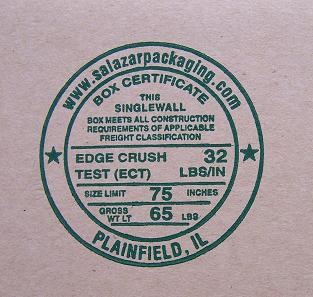
Most industries have a standard for measuring or describing the construction of a particular material. However, in the corrugated industry, there are two standards – the Mullen Test and the Edge Crush Test. This leads to quite a bit of confusion in the marketplace.
The Mullen Test, which has been used for many years, tests the bursting strength of corrugated board – how much pressure is required to rupture the wall of a piece of corrugated material. Boxes conforming to the Mullen Test standard are identified as 200# Test, 275# Test, etc. The higher the number, the stronger the corrugated box.
The Edge Crush Test, which was developed in the 1990’s, measures the stacking strength of corrugated board – how much top to bottom pressure a box can withstand before crushing. Boxes conforming to the Edge Crush Test standard are identified as 32ECT, 44 ECT, etc. Again, the higher the number, the stronger the corrugated box.
For most general purpose applications, 200# Test and 32ECT are interchangeable; however, the board comprising 200# Test material is slightly heavier than the 32ECT equivalent, making it somewhat more expensive.
32ECT boxes have become extremely popular since the Edge Crush Test was introduced, partly due to cost, and partly because stacking strength is a more meaningful measure of how a box will perform in the field.
If you’re curious as to which standard your own boxes conform to, look at the manufacturer’s certification stamp that appears on one of the bottom flaps. (See image above!)

